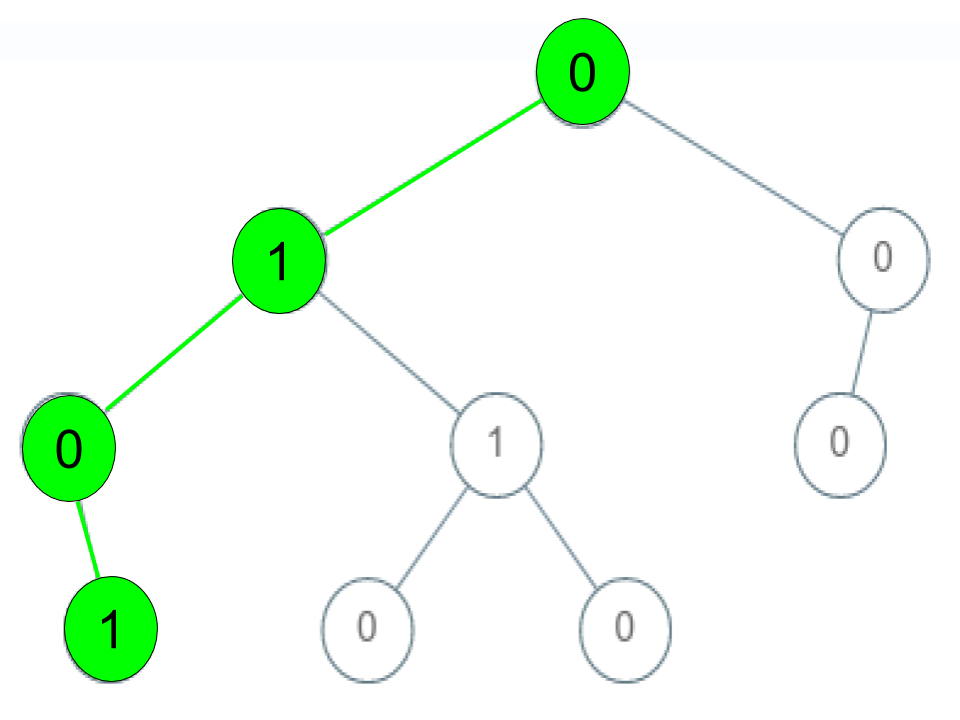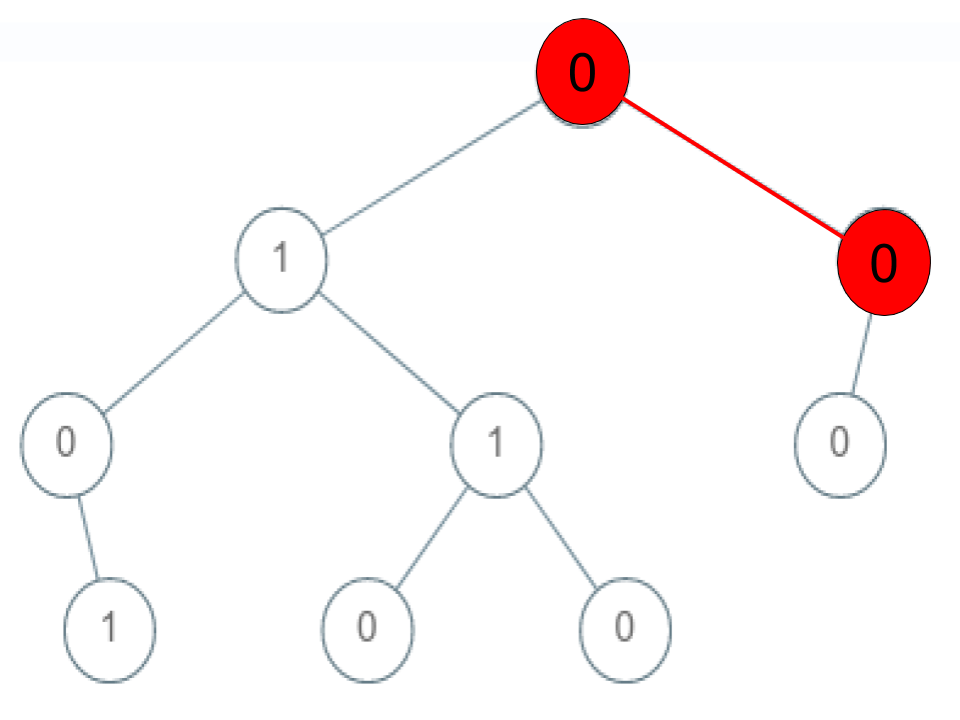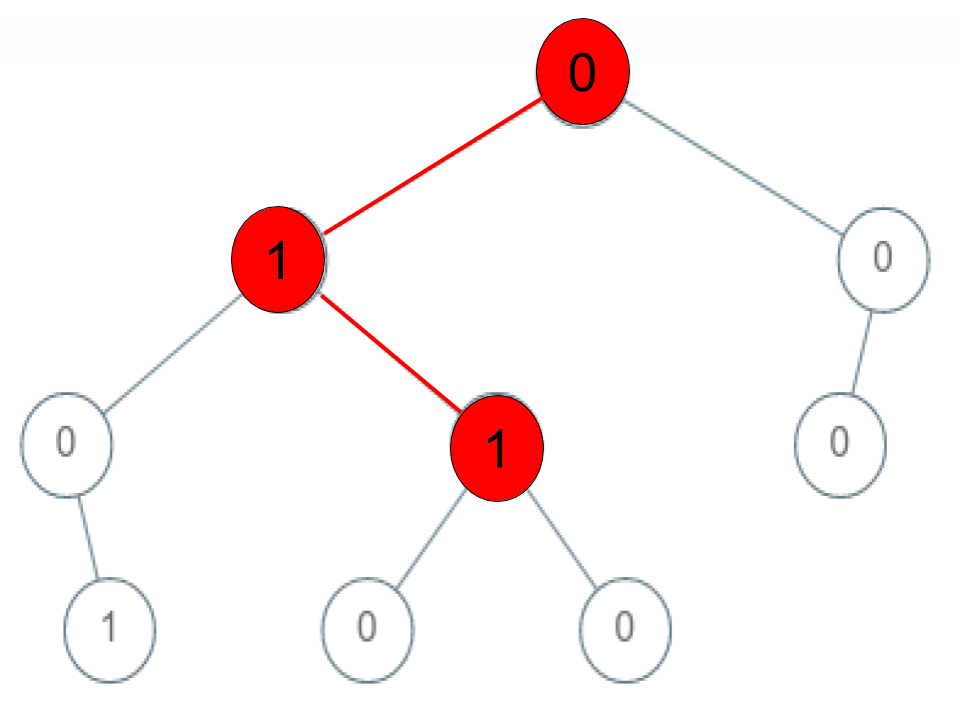Leetcode三十天挑战的最后一道题,果然越往后leetcode越加大难度,先是出Hard级别的题目,又是出新的题目。果然对我这种小白是够挑战的。还好今天的题我通过回溯法解决了,在官方的提示中,它提示是采用DFS,但是如果采用DFS我就需要额外为每个点建立标记,所以想了想还是用回溯法,风险就是,有可能超时,但好处是答案清晰明了。
Check If a String Is a Valid Sequence from Root to Leaves Path in a Binary Tree
Given a binary tree where each path going from the root to any leaf form a valid sequence, check if a given string is a valid sequence in such binary tree. We get the given string from the concatenation of an array of integersarrand the concatenation of all values of the nodes along a path results in a sequence in the given binary tree.Example 1:
Input: root = [0,1,0,0,1,0,null,null,1,0,0], arr = [0,1,0,1]
Output: true
Explanation:
The path 0 -> 1 -> 0 -> 1 is a valid sequence (green color in the figure).
Other valid sequences are:
0 -> 1 -> 1 -> 0
0 -> 0 -> 0
Example 2:
Input: root = [0,1,0,0,1,0,null,null,1,0,0], arr = [0,0,1]
Output: false
Explanation: The path 0 -> 0 -> 1 does not exist, therefore it is not even a sequence.
Example 3:
Input: root = [0,1,0,0,1,0,null,null,1,0,0], arr = [0,1,1]
Output: false
Explanation: The path 0 -> 1 -> 1 is a sequence, but it is not a valid sequence.
Constraints:
1 <= arr.length <= 50000 <= arr[i] <= 9- Each node’s value is between [0 - 9].
Hint1 Depth-first search (DFS) with the parameters: current node in the binary tree and current position in the array of integers.
Hint2 When reaching at final position check if it is a leaf node.
/*** Definition for a binary tree node.* struct TreeNode {* int val;* TreeNode *left;* TreeNode *right;* TreeNode() : val(0), left(nullptr), right(nullptr) {}* TreeNode(int x) : val(x), left(nullptr), right(nullptr) {}* TreeNode(int x, TreeNode *left, TreeNode *right) : val(x), left(left), right(right) {}* };*/class Solution {public:bool isValidSequence(TreeNode* root, vector<int>& arr) {int size = arr.size();if(root == NULL && size == 0)return true;if(root == NULL)return false;if(size == 0)return false;if(root->val != arr[0])return false;vector<int>next(arr.begin() + 1, arr.end());if(next.size() == 0){if(root->left == NULL & root->right == NULL)return true;elsereturn false;}if(isValidSequence(root->left, next))return true;if(isValidSequence(root->right, next))return true;return false;}};




